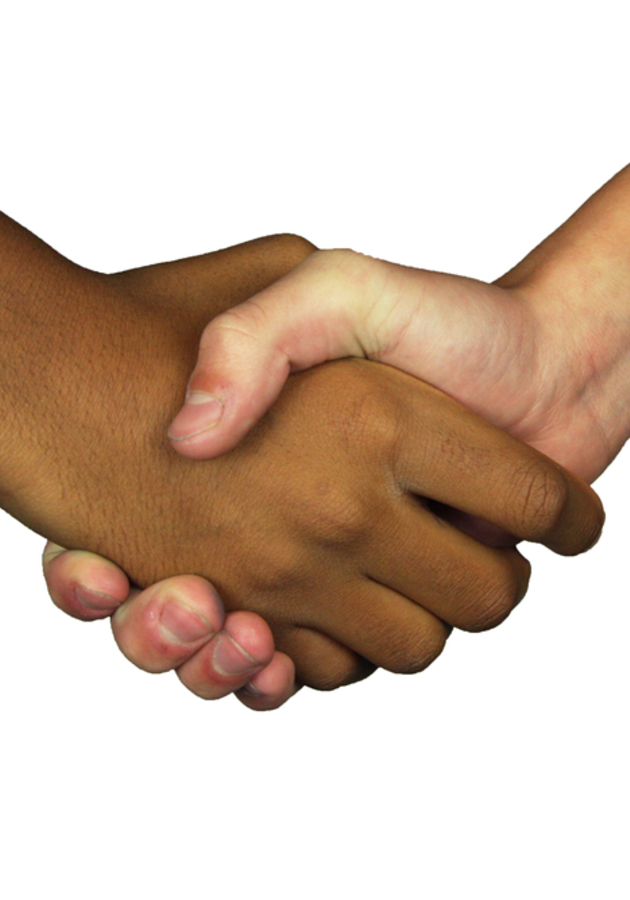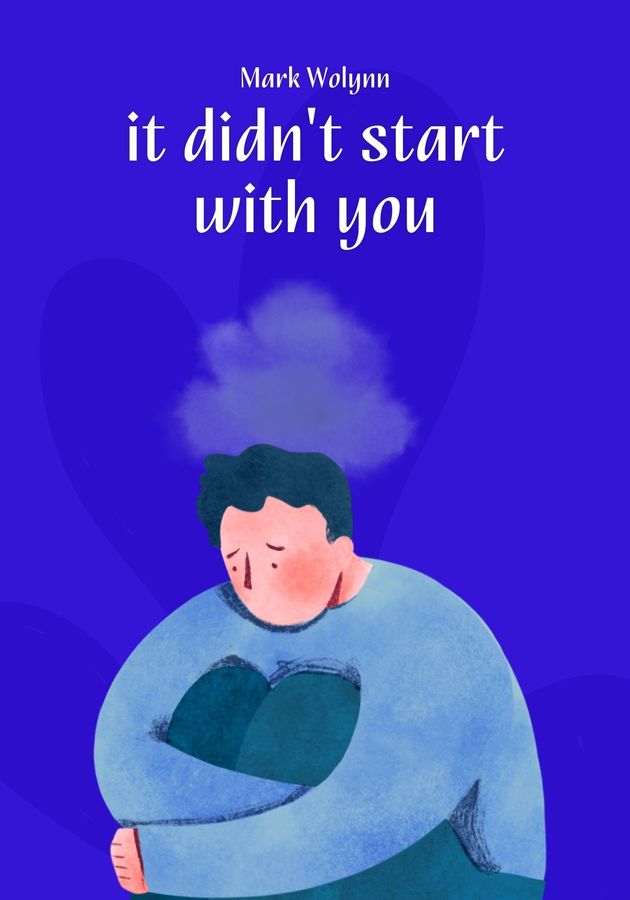Racism has become worryingly integrated in societies around the world. Author Ibram X. Kendi says this is especially true in the U.S., with the election of white supremacist Donald Trump - where despite being a multicultural society, racist views still abound. He says if we want this to change, we have to stop standing passively to the side, watching events unfold. Stand up to racism and get ready to learn how to be an antiracist!
Everyday racism
Everyday racism takes many forms. Maybe it is a white woman grabbing her purse when a black person sits next to her on the bus. Or, maybe it is a white person calling the police because black children are selling lemonade on the sidewalk. Maybe it is a white person asking a black person about the entire black race, or the seat next to a black person sitting empty on an overcrowded bus.
In a society defined by internalized racism, Kendi says it is not enough to say that you are not a racist. You have to try and become an antiracist. Saying that you are not a racist is, in fact, a veiled way of saying that you are a racist. Why? Because not being a racist implies neutrality, and there is nothing neutral about racism. Either you are for or against it - there is no middle way.
If you are like most people, you will probably agree with the following statement: “‘Racist’ isn’t a descriptive word. It’s a pejorative word. It is the equivalent of saying, ‘I don’t like you.’” This was a statement made by white supremacist Richard Spencer, who used this statement to try and prove that he was not a racist. The first step in becoming an antiracist is to dismantle the word “racism” and return it to its proper usage. It is not a pejorative or an insult. It is a descriptive word to name a deep inequality in our society. To say that it is a slur has the effect of freezing you into inaction. As the author says, “Only racists shy away from the R-word - racism is steeped in denial.”
Racism vs. antiracism
So what exactly do racism and antiracism mean? Someone who is a racist, according to the author, is someone who “is supporting a racist policy through their actions or inaction or expressing a racist idea.” An antiracist, on the other hand, is someone who “is supporting an antiracist policy through their actions or expressing an antiracist idea.” Racists believe in a racial hierarchy, while antiracists believe in racial equality.
Being a racist or an antiracist are not fixed identities. These can change in a moment. Take the author as an example: he believed he was strongly opposed to racism, but he had internalized racist ideas and even won a speaking competition with a racist speech that he gave while still in high school.
In his speech, he talked about the black youth of present-day America and how they thought it was okay not to think. He did not realize that in saying this, he was expounding the racist stereotype of the “lazy Black”. He had internalized racism to such an extent that he did not even realize the racist implications of what he was saying.
Now, he says: “I am no longer manipulated by racist ideas to see racial groups as problems. I no longer believe a Black person cannot be racist. I am no longer policing my every action around an imagined White or Black judge, trying to convince White people of my equal humanity, trying to convince Black people I am representing the race well.”
Being an antiracist means thinking carefully about the things we say and how we say them. Take the word “microaggressions” as another example. This word is used to describe everyday racist encounters. The author does not use the word anymore, but instead names these incidences for what they are: racist abuse.
Power constructs
Ironically, to become an antiracist, you will first need to identify racially. The author learned this as early as seven years old. To identify as black for him does not mean that race is a relevant scientific category. Race is a mirage, a power construct, and should be seen as such. But identifying as black allows him to see his history and culture more clearly. Thanks to our societies, policies, histories, and cultures, race has come to matter.
To consequently identify the ways in which race awards privileges and power, one has to identify racially. Many white Americans do not like to identify as white for the same reasons they like to call themselves “not racist.” They do not like to confront the fact that being white has granted them privileges that have been denied to their fellow black Americans.
The first person to introduce race as a power construct was a Portuguese prince named Prince Henry the Navigator. He revolutionized the slave trade in the 15th century by starting to exclusively trade in African slaves. Before his time, slavery had been separate from race. Prince Henry’s chronicler, Zurara, then started blending the entire African race into one homogenous group: He said they were “like mulattoes” or, “as black as Ethiops, and so ugly.”
The notion was later taken up by botanist and zoologist Carl Linnaeus in the 18th century, when he color-coded races in his “System Naturae.” Along with the four races, White, Yellow, Red, and Black, he created a racial hierarchy with White at the top and Black at the bottom. Linnaeus also gave each race its own characteristics. The stereotype of the “lazy Black” was born.
Racism was not caused by ignorance or hate. Racism was born out of pure self-interest.
Biological racism
While you should be aware of the power construct of race, you should still treat individuals as individuals, Kendi writes, and not remember them according to their skin color. This racist categorization can be seen in the American school system: According to the U.S. Department of Education data, in 2013-2014, black students were four times more likely to be suspended from public schools than white students.
The author experienced the different treatment of white and black students himself when he was in third grade. In his class, there were mostly children of color, and three white children. Kendi says it was blatantly obvious that these three children received special treatment: whenever one of them raised their hand, they would be picked by the white teacher, no matter how many other children were quicker or knew the answer as well.
During his time at school, the author was repeatedly taught by adults that a differing outer appearance signified different forms of underlying humanity. This is biological racism at its best. The author writes, “Biological racism rests on two ideas: that the races are meaningfully different in their biology and that these differences create a hierarchy of value.” No matter how different we may look on the outside, this should be meaningless in the face of our shared humanity.
In fact, these seemingly obvious biological differences are not even grounded in the biological makeup of humans. The human genome is 99.9% the same for all humans, no matter their race.
Colorism
Just like claiming you are not a racist, saying you are colorblind is a veil for saying you are racist. Being colorblind means you fail to see race, and you fall into a racist passivity. Kendi says that within different races, there also exists a hierarchy of color, ranging from Light to Dark.
The beauty ideal in society nowadays is that of Lightness, “the race of lighter skin and eyes, straighter hair, thinner noses, and semi-thick lips and buttocks, perceived as biracial or racially ambiguous.” The author himself, while in college, strove to assimilate to the lighter beauty ideal and therefore to be more white, while simultaneously trying to be an antiracist. He was wearing light-colored contact lenses. He did not realize that this was actually the latest embodiment of colorism.
“Colorism” was coined as a term by novelist Alice Walker. It is a collection of racist policies causing inequities between Light and Dark people. As an antiracist, you should be aware of color lines as well as racial lines. Among white children for example, lighter skin is attributed with positivity, while darker skin suggests negativity. Kendi says Dark students receive significantly lower GPAs than Light students do and that employers prefer light black men over Dark black men. Within families, Dark sons and Light daughters receive higher-quality parenting than Light sons and Dark daughters.
The effects of colorism are especially tough on black women. Lighter black women are considered to be more attractive than Dark black women, which is why 70% of Nigerian women use skin lighteners. Ironically, a similar trend has taken hold in the white population, namely that of the fake tan. Still, white people look down on bleaching black people, not realizing that the two concepts are not different at all.
Especially Light blacks are in-between groups – they are rejected by the Dark black community as not being fully black, and by the white community as not being fully white. The inequities between Light and Dark black people can be as significant as those between black and white.
How to be an antiracist
In many ways, racism is like cancer. It is a disease that has spread through society and keeps multiplying. As the author puts it: “Racism has spread to nearly every part of the body politic, intersecting with bigotry of all kinds, justifying all kinds of inequities by victim blaming; heightening exploitation and misplaced hate; spurring mass shootings, arms races, and demagogues who polarize nations; shutting down essential organs of democracy; and threatening the life of human society with nuclear war and climate change.”
To treat racism, it does not do to treat the symptoms. You have to tackle the root cause of racism: self-interest. If you only treat the ignorance and hate springing from racist ideas, it is akin to treating the symptoms of a cancer patient, rather than the tumor itself. To combat racism, you need to become an antiracist.
Here are ten steps for how you can become an antiracist:
- See racial inequity as a problem of bad policy, not bad people.
- Recognize racial inequity in its various manifestations and intersections.
- Once you have done that, seek out the racial policies causing racial inequity.
- Create antiracist policies that can get rid of racial inequity.
- Seek out the group or person who has the power to make an antiracist policy become reality and work together with policymakers.
- Use your newfound knowledge to educate about racist and antiracist policies.
- Use antiracist power to take down racist policymakers and institute antiracist policies instead.
- Keep a close watch to make sure that the antiracist policy does what it is intended to do and eliminates racial inequity.
- Don’t blame people for failed policies. Simply start the progress again until you find the most effective antiracist policies.
- Keep a close watch to prevent new racist policies.
Final Notes
Racism has been around for a good 600 years and has spread like cancer through populations around the world. It was not introduced as a consequence of ignorance or hate, but rather out of self-interest. Race is a power construct, a mirage that has taken hold and is not easily shaken. To combat racism, it is not enough to passively stand by. You have to take action and defy racism in your society!
12min Tip
Next time you encounter everyday racism, stand up and say something – be an antiracist!





























